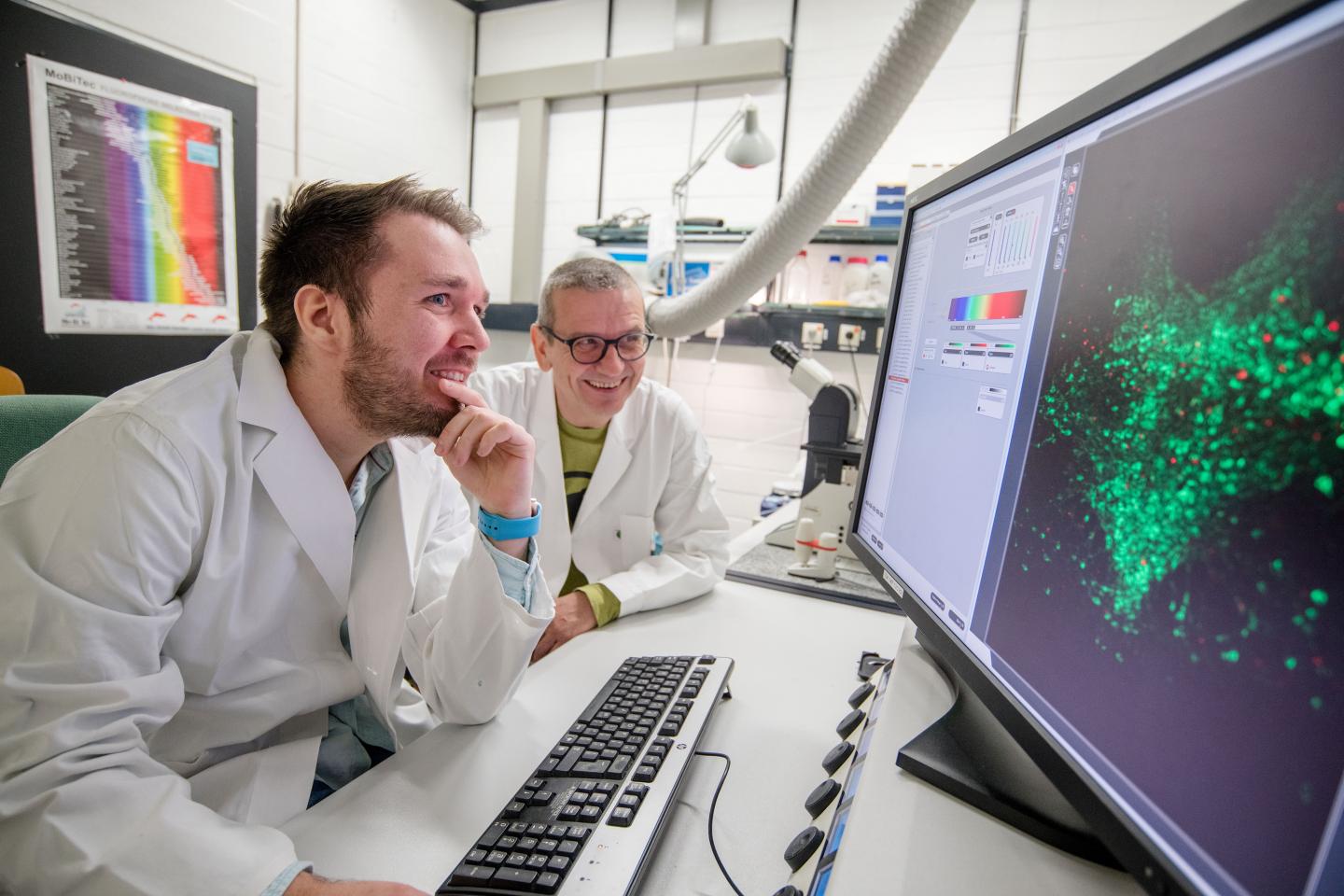This new tool is a true two-in-one solution. In future, it might help to study a number of diseases.

Credit: RUB, Marquard
Using a novel optogenetic tool, researchers have successfully controlled, reproduced and visualised serotonin receptor signals in neural cells. To this end, they modified a photosensitive membrane receptor in the eye, namely melanopsin. As a result, they were able to switch the receptor on and off using light; it also acted like a sensor indicating via fluorescence if specific signalling pathways in the cell had been activated. The sensor was, moreover, specifically designed to migrate to those domains in the neural cells that are sensitive to the neurotransmitter serotonin. The team from Ruhr-Universität Bochum, headed by Dennis Eickelbeck and Professor Stefan Herlitze, described its project in the journal Nature Communications Biology on 14 February 2019.
Activating signalling pathways with light
Melanospin is a G-protein-coupled receptor capable of controlling specific signalling pathways in the cells. In earlier studies, the team at the Department of General Zoology and Neurobiology in Bochum had deployed the receptor as an optogenetic tool. Having modified the receptor, the biologists were able to switch it on with blue light and off with yellow light. Thus, they could activate various G-protein-coupled signalling pathways in neural cells using light.
In their current study, the researchers optimised the tool and turned it into a sensor that indicates if a G-protein-coupled signalling pathway has been switched on. The trick: once such a signalling pathway is activated, the concentration of calcium ions in the cell increases. The researchers melded melanopsin with a calcium indicator protein, whose fluorescence intensity increases following an increase in calcium concentration in the cell. Green light thus indicated that a G-protein-coupled signalling pathway had been activated.
Dual colour code
Subsequently, the biologists added two more functions to their sensor, i.e. the calcium-melanopsin-local-sensor, Camello for short. They integrated a second fluorescent protein that permanently emits red fluorescence. Monitoring the red light, they were able to pinpoint the sensor in the cells, regardless if a signalling pathway was switched on or not. A red light thus indicated that the Camello sensor was present, whereas an additional green light showed that it had activated signalling pathways.
Receptor trafficking in specific domains
Finally, the researchers added a fragment of a serotonin receptor to Camello. As a result, the sensor was trafficked to those domains of the cell where serotonin receptors occur naturally. “Since serotonin is involved in numerous processes in the central nervous system, it also plays an important role in many disorders, such as depression, schizophrenia, anxiety and migraine. We are hoping that, by facilitating detailed research into the transport, localisation and activity of relevant receptors, our tool will help us understand the mechanisms underlying these diseases,” says Dennis Eickelbeck.
###
Cooperation partners
For the purpose of the study, the Department of General Zoology and Neurobiology collaborated with colleagues from the Developmental Neurobiology research group, the Neural Computation Institute, and the Department of Biophysics at Ruhr-Universität Bochum.
Media Contact
Dennis Eickelbeck
[email protected]
49-234-322-7246
Original Source
https:/
Related Journal Article
http://dx.




